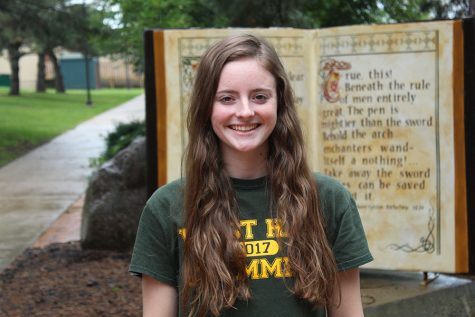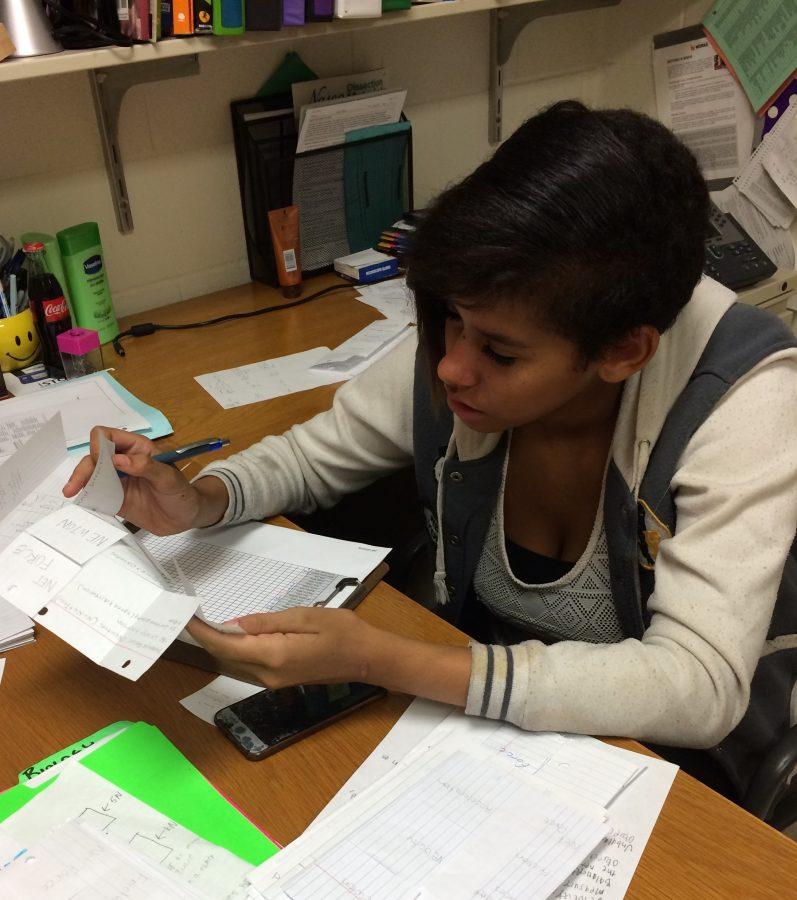TAs: giving back and acquiring experience
A counselor, teacher and student explain what TA-ing is all about.
Grading papers, answering questions and preparing labs. They’re here to help. They assume numerous responsibilities. And they’re growing in numbers. The classroom teaching assistant (TA) is becoming a prevalent part of the West High campus.
“It started probably four or five years ago when Mr. Herman and I…were talking about [whether or not TAs would be] helpful to have,” guidance counselor Paul Breitbach said. “Sometimes we overlook our best resource, which is our own students.”
Initially designed as a way for students to help in science classes, the TA program has expanded to about 50 TAs helping out in a multitude of subjects.
“I think that’s a positive thing–it’s grown. Everybody benefits,” he said. “We have students who want to help other students.”
Kaia Williams ‘19, who TAs for science teacher Maureen Head, said her responsibilities include preparing labs and cutting paper. Sometimes she helps the students in her class with homework as well.
“I help with some homework…I can’t fully give them the answer. If they have a question that I can answer, then I will answer it,” said Williams.
As far as the TA experience, Williams described it as “more laid-back than being a student.”
“There’s more freedom than there [is] actually being a student,” she said. Teachers depend on you to do more and there’s more responsibility. “It’s like a different class, but not really a class.”
Although initially being close, Williams said she has become closer to Head.
“I’d say [I’ve become closer to Head]…most of the time she wouldn’t let any students in her office or in the back where she preps the lab,” she said. “And now I’m able to go in and out freely whenever. Normally, when you’re a student, you have to ask to leave the room, but if I needed to leave the room I can go.”
Head shared Williams’ sentiment.
“[I do feel closer to my TA]. You can develop a relationship with the kids while they’re in your class, but I think that the boundaries are a little bit different,” she said. “When you’re working with a kid who’s currently taking your class versus a kid who’s just kind of coming back to help you out or be around. It’s more casual; it’s more relaxed.”
Regardless of that relationship, Head still has expectations for her TAs.
“If someone’s TA-ing for me, I need the help, so I can’t just let [them] sit here and hangout and be on [their] phone all day.”
Head not only expects her TA to help her, but also help her students.
“If they don’t have another task, like the grading, or the setting up or tearing down, then I’m expecting that they ask me questions if they need to, to kind of jog their memories about what it was that we learned last year,” she said. “And then they’re out there trying to answer questions and trying to interact with the kids as they’re doing a lab.”
Williams, however, did clarify that the teacher still is the main educator.
“[People] think TAs actually are teaching the class, but … they’re mainly in the shadows,” she said.
Since becoming a TA, Williams said gained she has a greater appreciation for the amount of work teachers have.
“I can relate to … how she doesn’t have time to grade and put everything into PowerSchool,” she said. “So, if she gets the things graded, but doesn’t put them in PowerSchool, that’s what I’m down there for.”
As for what makes a good TA, Breitbach believes that an interest in the subject and relationship with the teacher go hand in hand.
“TAs want to help other people and they have an interest in that subject…I think it’s a combination of that and having a good relationship with the teacher they’ve had in the past. I think all of the students that are doing this see it as an opportunity to (1) give back and (2) if they’re interested in teaching … get some experience with that.”
As for the future of the TA program, Breitbach is looking for feedback.
“I guess the next thing for us to do is do more follow up with teachers and TAs and see how we can strengthen [the program] and make it better,” he said. “It grew from a small thing in science and now there are about 50 students helping in a variety of ways.”
Your donation will support the student journalists of West High School. Your contribution will allow us to purchase Scholarship Yearbooks, newsroom equipment and cover our annual website hosting costs.

Jessica is a senior at West High and is enjoying her third year on staff. Though not a baller, she truly excels when it comes to taking the mic at karaoke...



